The Riddle of the Horsemen
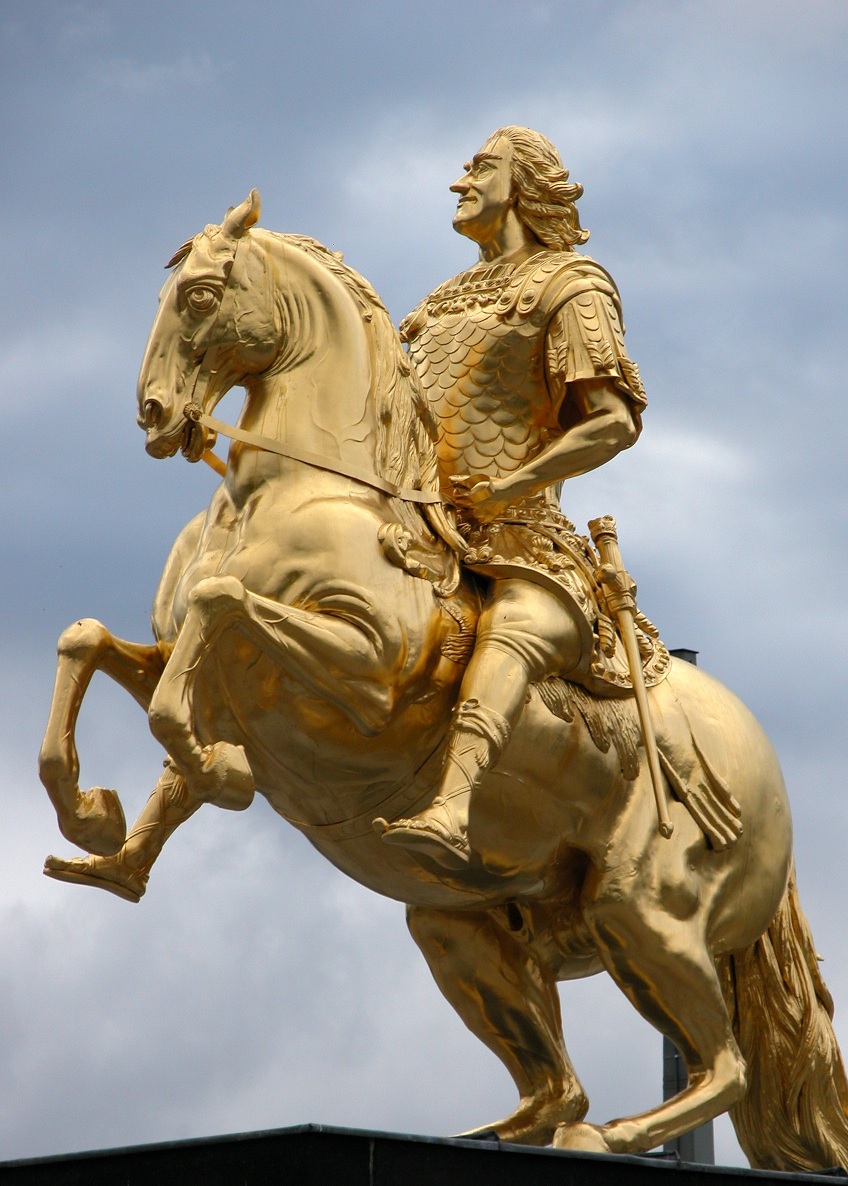 Golden Horseman, 1735, Dresden, Saxony (Germany) |
Horseman | 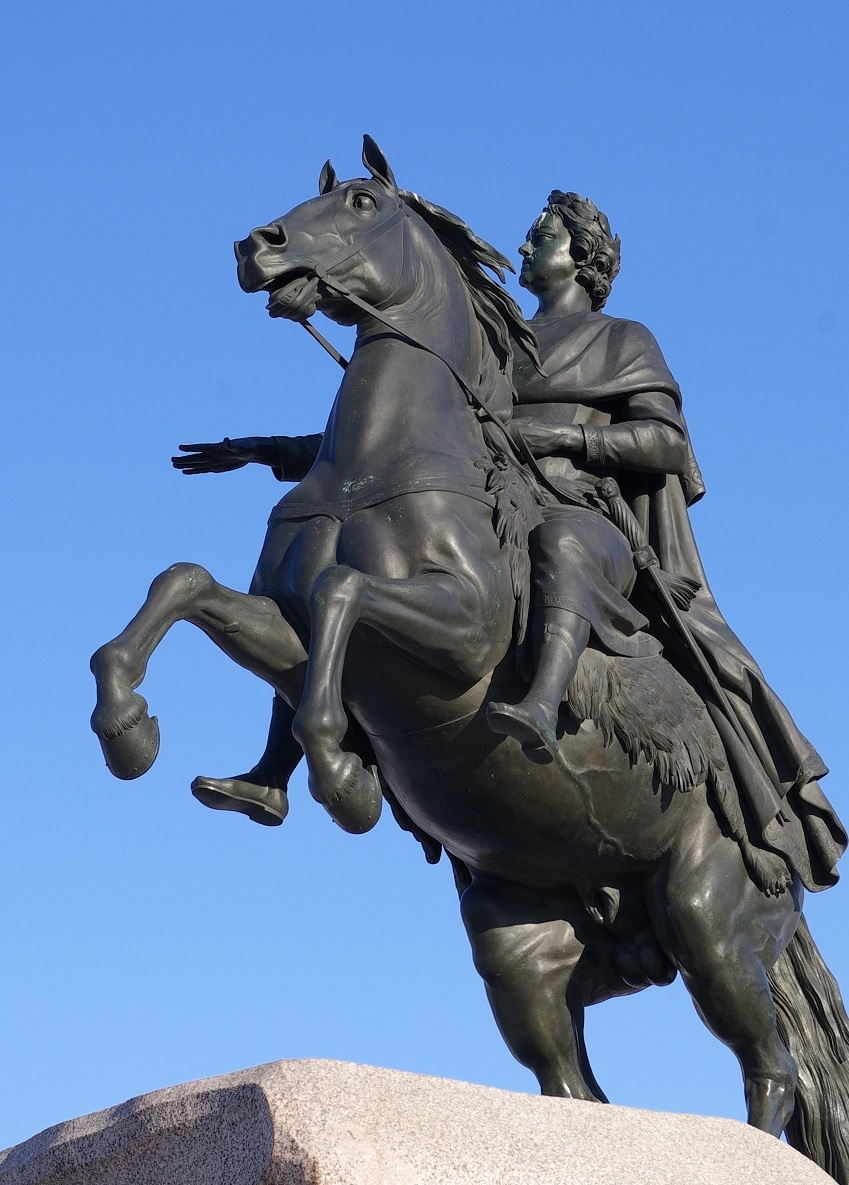 Bronze Horseman, 1782, Saint-Petersburg, Russia |
 Lion |
Saddle is the skin of a … |  Bear |
 Augustus II the Strong, (1670 – 1733) |
Represents |  Peter I the Great, (1672 – 1725) |
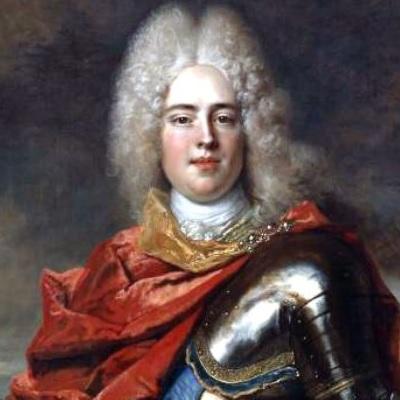 Augustus III, (1696 – 1763) |
Commissioned By |  Catherine II the Great, (1729 – 1796) |
Jean-Joseph Vinache, (1696 – 1754) |
Sculptor |  Étienne Maurice Falconet, (1716 – 1791) |
 Golden Horseman Magnet |
Fridge Magnets |  Bronze Horseman Magnet |
These two statues look remarkably similar, don’t you think? Same position of the horse, same position of the horsemen, both have Roman-themed outfits and sandals (and neither has stirrups), both sit on animal skins, both hold the reins with the left hand…
Would it be a coincidence? Or perhaps just thoughtless copying? I do not know for sure, but let me tell you what could have happened…
Table Of Contents
A Little Girl With Dreams
↑ Back To Table Of Contents ↑Once upon a time there was a little girl of the age of 6 called Sophia Augusta Fredericka. She was a princess, but her family was poor, that they lived in a very modest house, and her clothes were old and had repairs. The rulers of the lands around her father’s principality had much greater wealth, and there were splendid treasures. One of the most dazzling ones was the statue of a king of a Southern land named Saxony, it was told to be made of gold, dazzling, like in a fairy tale. The king of Saxony has got it erected to glorify his father, the great king Augustus II the Strong; it was designed by a French sculptor Jean-Joseph Vinache. Sophia Augusta Fredericka was told that it was very wise of the new king to build such splendid statue of his father; by doing so, he was not only showing his respect to the great king, but was showing to his subjects the strong link between him and his highly regarded father… Unfortunately, Sophia Augusta Fredericka could not travel to see the Golden Horseman, but the saw it on the black and white engraving, the postcard of those days…
Time passed, Sophia Augusta Fredericka turned 15 and was told that she would have to travel to the East and marry the emperor of the Russia, the far far away land, very big and wealthy, full of snow and bears. Armed with the inexorable determination, she converted to Orthodox Christianity (just as Augustus II who has converted to Catholicism), took the name of Catherine, managed to integrate into Russian court life, became liked by everybody except her unwise husband Peter III of Russia, and when he died after just a few months or reigning, at the age of 33 she ascended to the throne of Russian empire under the name of Catherine II.
The Powerful Empress
↑ Back To Table Of Contents ↑The Empress had great wealth at her disposal, and she was determined to be seen as the most enlightened monarch. She founded a great collection of fine art objects, that laid the foundation of the Hermitage museum, bought Denis Diderot‘s library when he was in financial difficulties and allowed him to retain it for his lifetime, … But, when it came to building a statue, that would demonstrate her respect to the country she was ruling and to relate to the glorious past, she knew exactly what she wanted! It had to represent Peter the Great, that lived at about the same time as Augustus; he was, just like Augustus, famous for his military achievements and revered by the people.
Catherine the Great has discussed the idea of the monument in her letters to Voltaire and Diderot, and for them the sculpture had a symbolic meaning beyond the reassertion of the right to rule: the monument was to symbolize the victory of mind and civilization over nature; the statue means mind and the rock means barbarism. Diderot has recommended a sculptur Étienne Maurice Falconet, his personal friend, to Catherine the Great.
Differences And Similarities
↑ Back To Table Of Contents ↑Étienne Maurice Falconet‘s statue is different from the Golden Horseman in a number of details:
- Falconet has put a snake (an allegory of Sweden, defeated by Peter the Great in the Great Northern War, where Augustus II was amongst his allies) under the feet of the horse.
- The back of the horse is covered by a bear skin, bear being a typically Russian animal, big, strong and wise, the exact opposite of stealthy, deceitful snake, and Augustus II is sitting on lion’s skin; lion was used as a reference to an immense personal strength of Augustus II).
- The metals used to make the statues are obviously different. Russian name of the Bronze Horseman is Медный всадник (Copper Horseman). The statue is made of bronze, and its Russian name is due to Alexander Pushkin‘s poem (maybe because it is easier to find a rhyme for “Медный” than for “Бронзовый”). Ironically, it is the Golden Horseman which is made of copper, more specifically, from the layers of heated copper over an iron frame, which was subsequently covered with the leaf gold (source: ‘this book).
- The arms are different. The stretched right hand of the Bronze Horseman was modelled from a Roman bronze hand, found in 1771 in Voorburg in the Netherlands at the site of the ancient Roman town Forum Hadriani. The Golden Horseman is holding a martial baton in his right hand. Also, unlike Augustus, Peter does not pull the reigns.
Other than this, the Horsemen are the same:
- The rider is a great and popular ruler of the recent past, known for his military conquests;
- The rider wears a Roman emperor’s outfit;
- The positions of the horses and the monarchs are very similar;
- Both statues were designed to make a connection between the current ruler and a glorious predecessor, to show the respect and also to strengthen the claim to the power by relating to a role model of the recent past;
- Even the names the statues are known under (Golden Horseman and Bronze Horseman) are similar.
This is just a theory, opinions welcome!
Connections
↑ Back To Table Of Contents ↑Another Dresden Connection
↑ Back To Table Of Contents ↑

Georg Christoph Grooth was studying in Dresden in around the time when the Golden Horseman was erected, certainly was aware of it, and this subject might have been mentioned in the conversations between Catherine and Grooth during the seatings.
Porcelain Connection
↑ Back To Table Of Contents ↑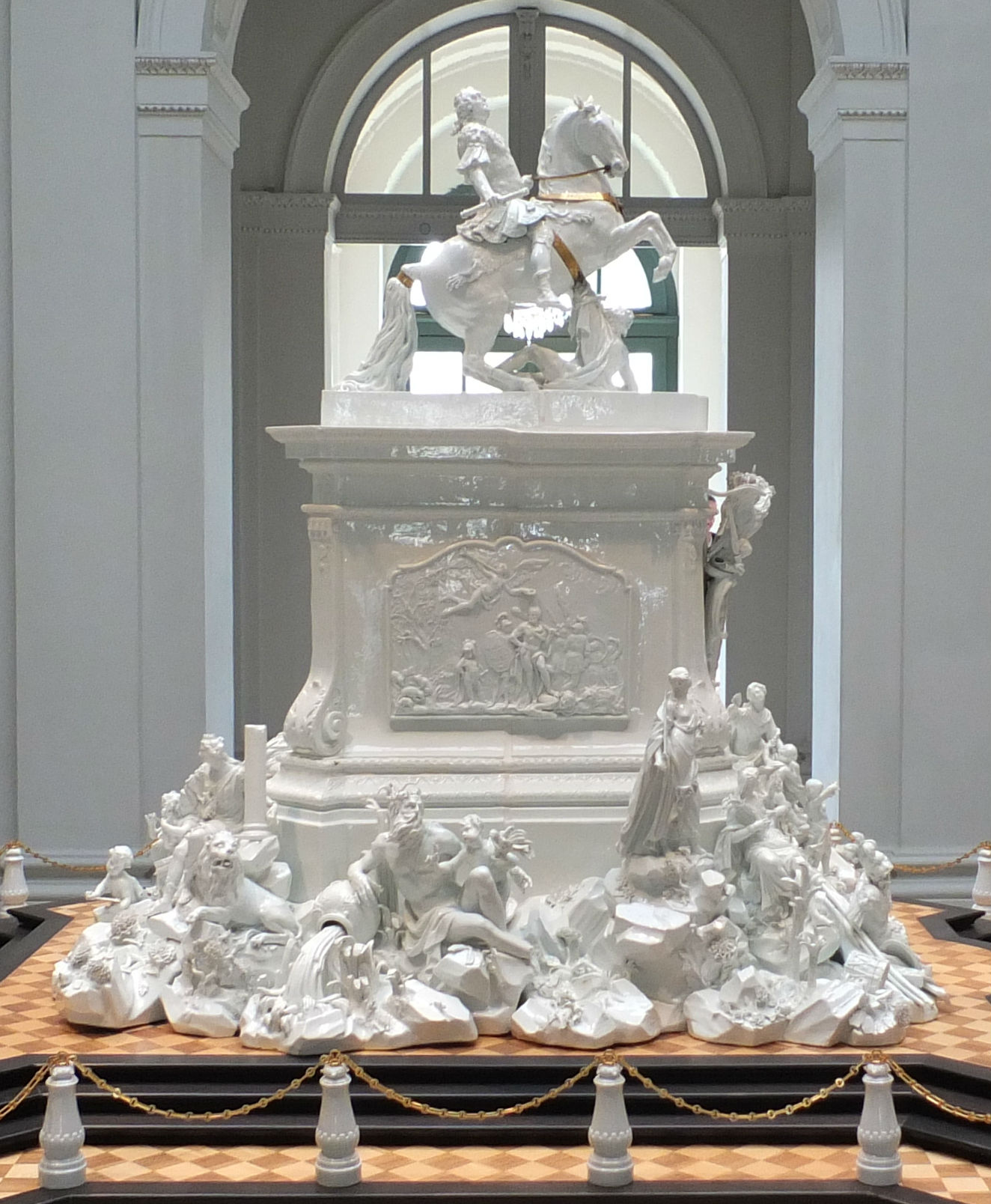

Étienne Maurice Falconet, the artist who created the statue, was the director of the sculpture atelier of the Manufacture nationale de Sèvres, the French porcelain factory, from 1757 right until he was invited to Russia by Catherine the Great in September 1766. Even though he was mostly making small scale porcelain figurines – see Alain Truong’s blog for a representative selection – he was, most probably, familiar with the porcelain model of a monument of king Augustus III on a rearing horse. This 123 centimeters high model, completed in 1753, was probably one of the largest and most elaborate porcelain objects of the time, and was supposed to be a model for a gigantic 12 metres high sculpture which was not completed because of the Seven Years' War and subsequent death of the patron, Augustus III of Poland.
This porcelain model is very similar to the Golden Horseman (there is an animal skin instead of a saddle) except the enemy under the horse (probably necessary because of the qualities of porcelain), thus the influence of the Porcelain Horseman would imply the influence of the Golden Horseman on the Bronze one.
French Connection
↑ Back To Table Of Contents ↑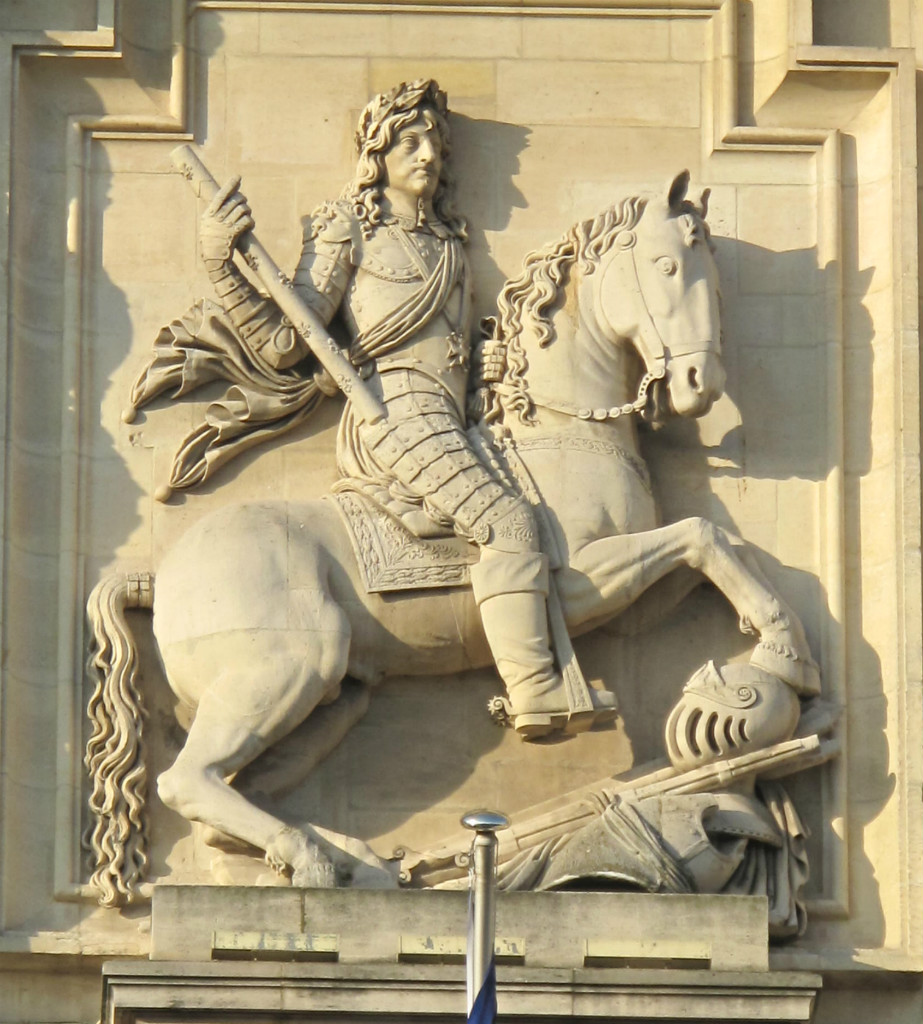
In addition, there was one such statue of Louis XIII in Reims, but it was destructed during the French revolution. Later, in 1818, a high relief with the depiction of the destructed statue was placed on the building of the townhall the statue used to face.
There were many projects for the statue of Louis XIV, however, Gian Lorenzo Bernini‘s creation seems to be the only large scale statue of Louis XIV on a rearing horse created in the 17th century. Louis XIV wanted it Bernini to create a freestanding marble statue similar to The Vision of Constantine. For the technical reasons, a freestanding marble statue could not have only two supporting points; so the artist has chosen to support the horse’s belly, too. The statue greatly displeased Louis XIV and was banished to the farthest corner of Versailles park.
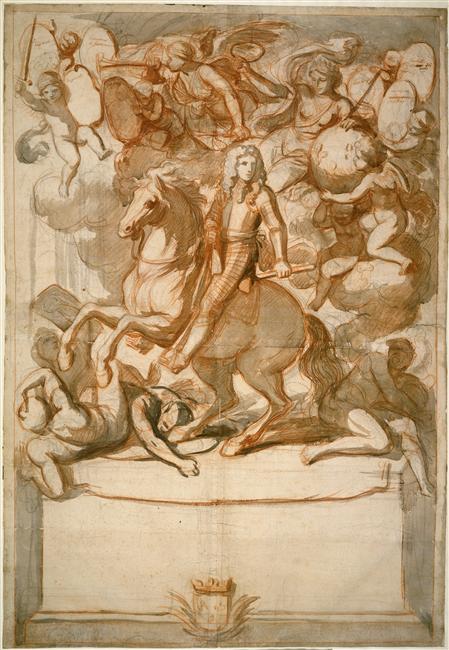
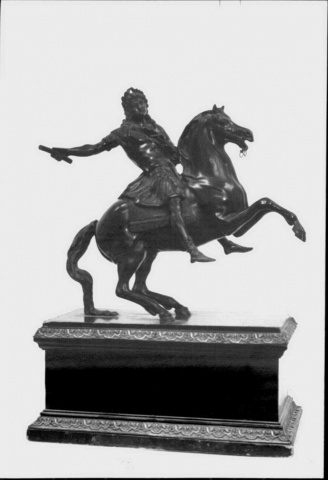

Even though the projects of the statues for Louis XIV did not bear good fruit, they have increased the popularity of the representation on a rearing horse for both the rulers and the artists who create their statues, including Jean-Joseph Vinache and Étienne Maurice Falconet.
However, there were portraits and figurines of Louis XIV showing him on a rearing horse with an animal skin as a saddle.

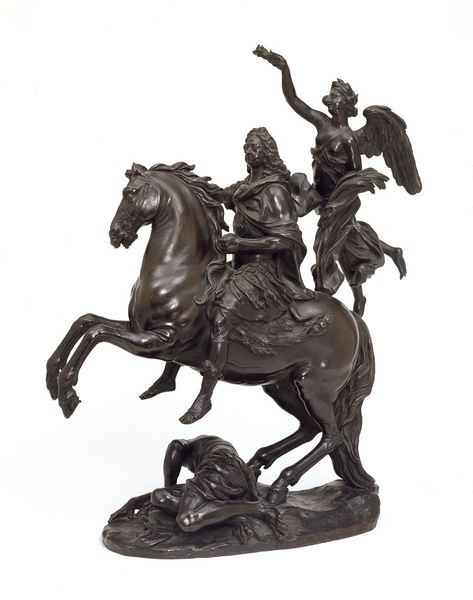
Earlier Sculptural Depictions of the Rulers on the Rearing Horses
↑ Back To Table Of Contents ↑The Golden Horseman was not the first large scale sculptural depiction of a ruler on a rearing horse. Presumably, the first (since antiquity) such equestrian monument was suggested by Jacopo Bellini. This design is believed to be submitted for a competition for the monument of Niccolò III d'Este, commissioned by his son Leonello d'Este, Marquis of Ferrara. Unfortunately, his design was rejected.
The next notable attempts were made by Leonardo da Vinci: he has suggested to the Duke of Milan Ludovico Sforza to make a gigantic bronze equestrian monument to commemorate the glory of the Duke’s father Francesco Sforza. On Leonardo’s drawing Ludovico’s father holds a baton in his right hand (which is outstretched towards the back) and the reins in his left hand. This design won the competition but had to be redesigned because it proved impossible to cast, so another da Vinci’s design was chosen instead, but it could not be completed either because in 1499 French troops led by Gian Giacomo Trivulzio invaded Milan. Ironically, later Leonardo would suggest to make such sculture as a funeral monument for Gian Giacomo Trivulzio, but it won’t be completed either.
The next statue is the equestian monument of Leopold V, Archduke of Austria made in Innsbruck in 1631 by Caspar Gras. It also appears to be the first ever monument with only two support points (the hund legs of the horse and not its tail). Unfortunately, although competed, the statue was never installed and remained in storage until the 20th century.

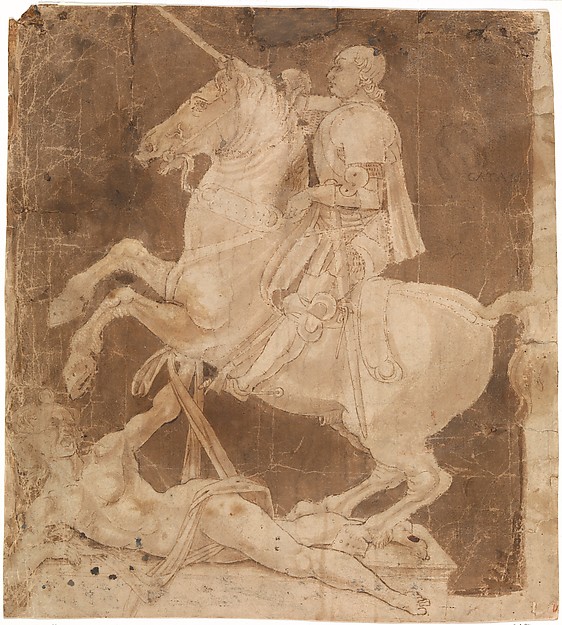
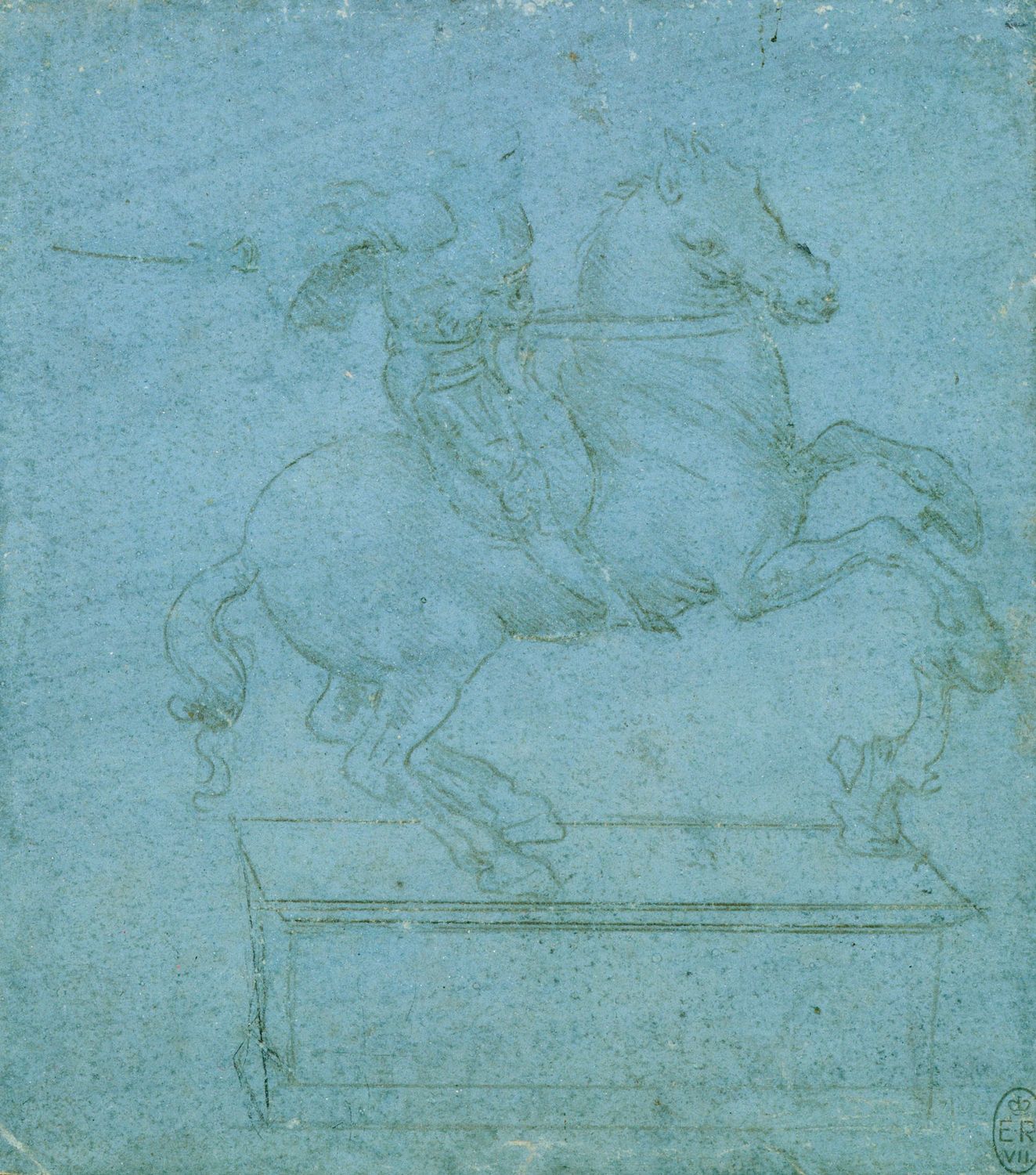
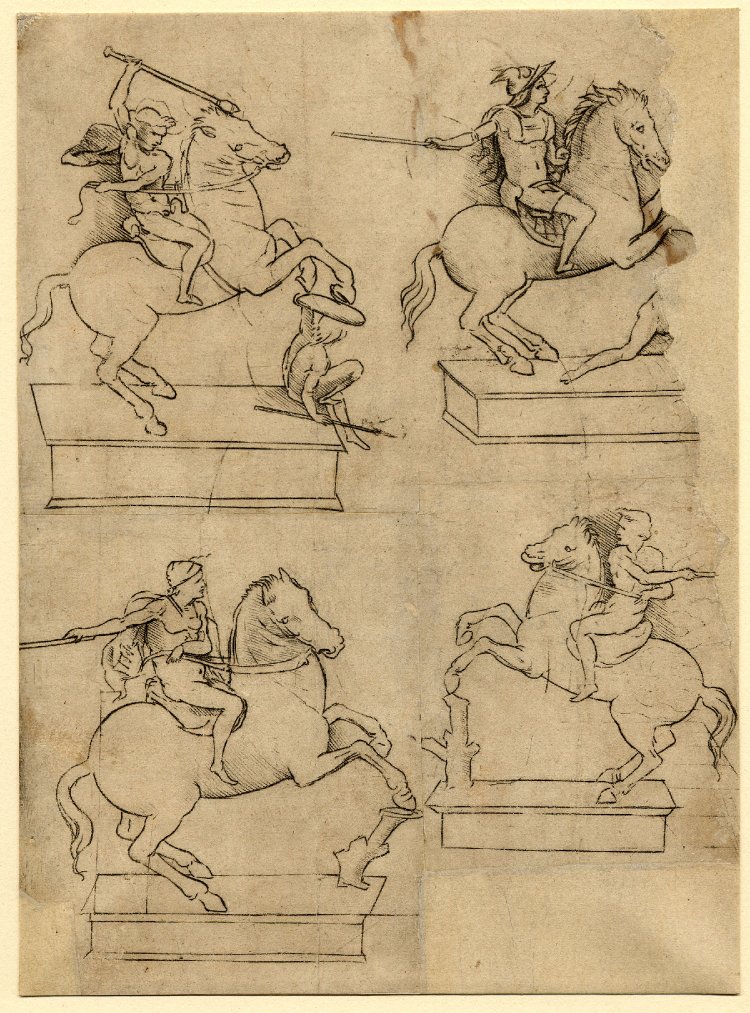

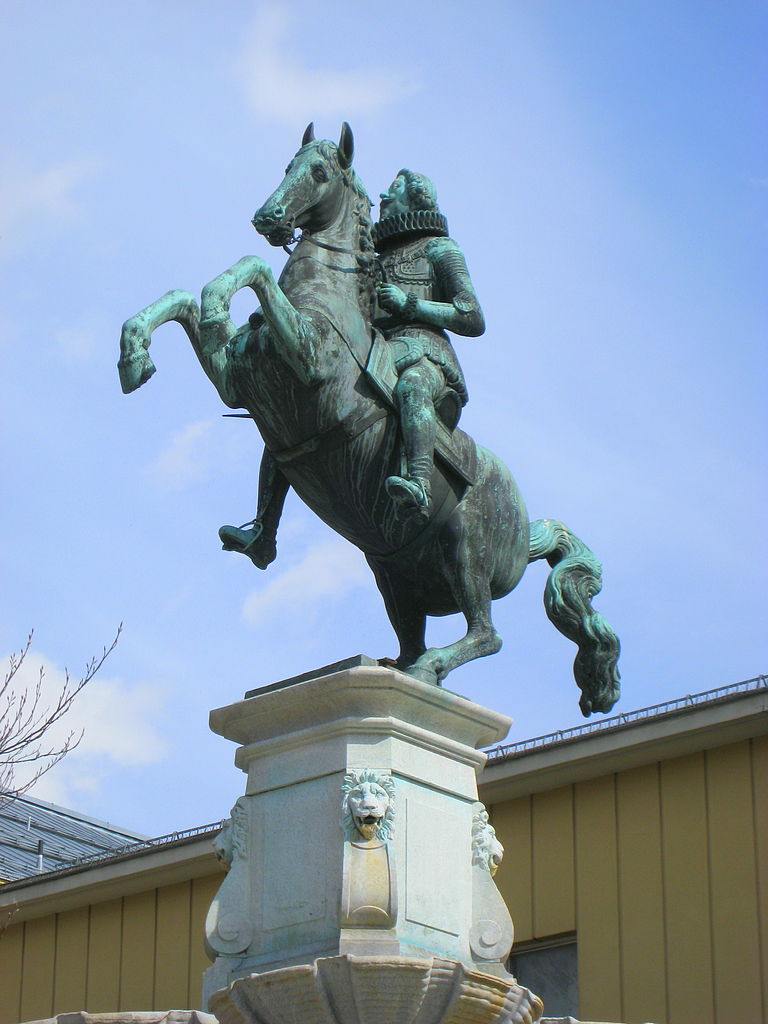
Further development of the large scale equestrian monuments of the rulers on rearing horses was due to an Italian school of sculptors. The first such monument to be completed and installed was a moment to king Philip IV of Spain designed by an Italian artist Pietro Tacca. Then there was a statue of Vittorio Amedeo I in Turin, again by Italian artists, then the monument to Charles II of Spain in Sicily, based on another Italian artist’s design. The move of Italian sculptors to France launched the French chapter. You could gather more information about these and related artworks in other posts of my blog.
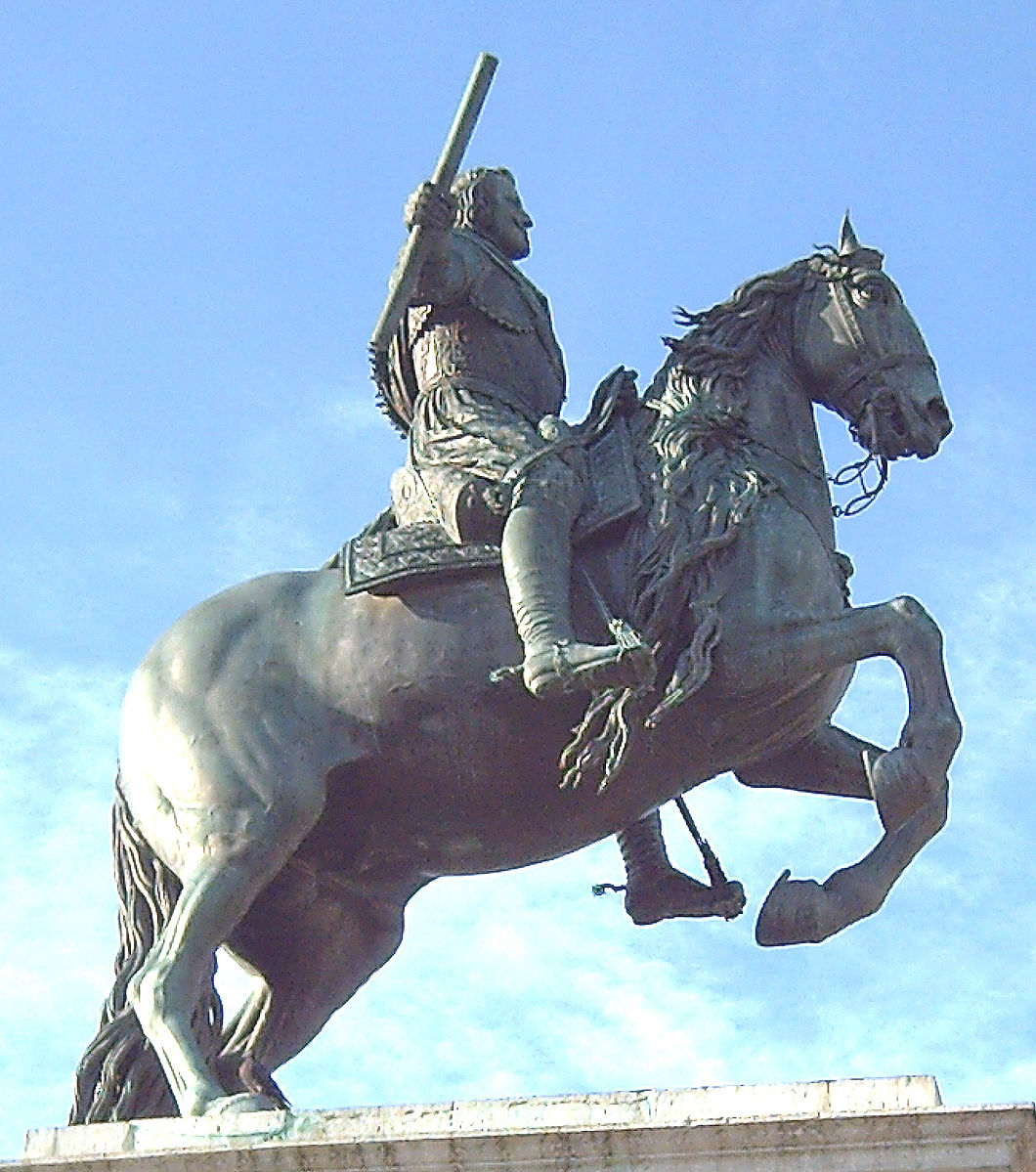
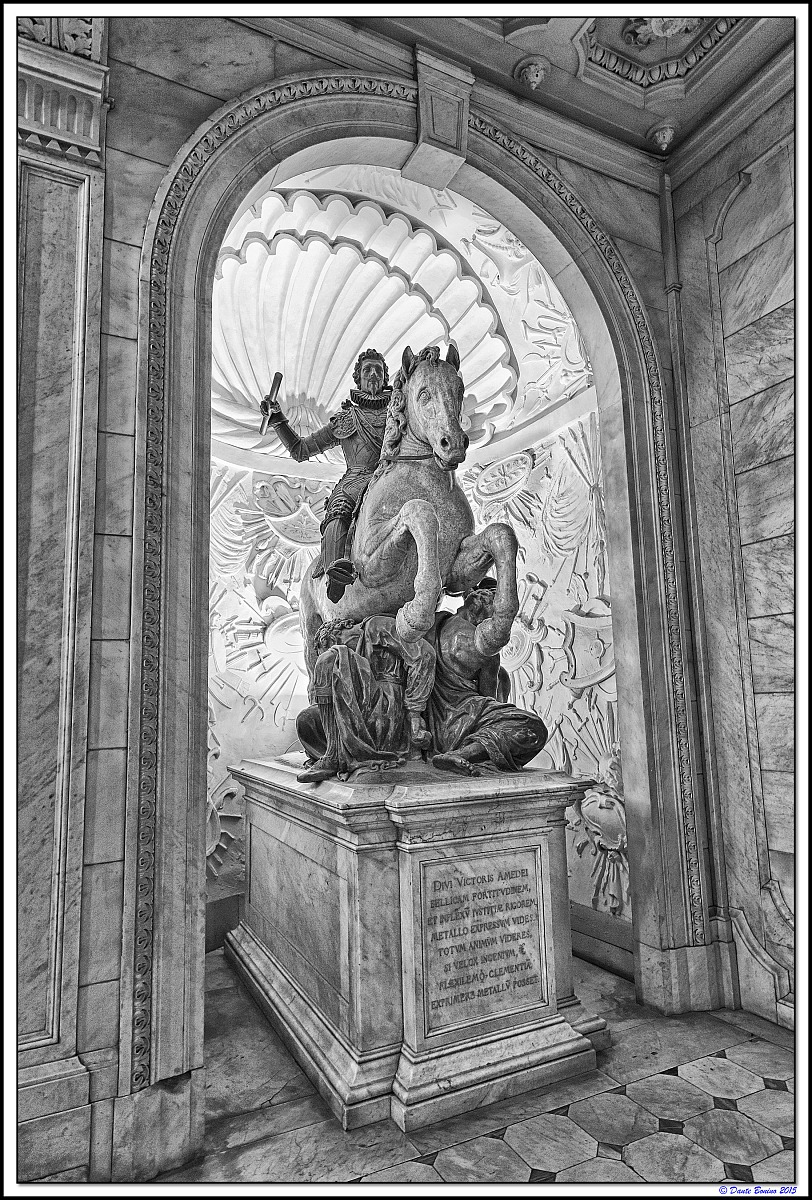

Additional Information
↑ Back To Table Of Contents ↑- Augustus II was not the first king to renounce Protestantism for political reasons. Henry IV of France did so in 1593, famously proclaiming that Paris is well worth a Mass.
- It is not easy to find information about the Golden Horseman. The best on-line source is “Der Goldene Reiter – Ein Wahrzeichen Dresdens” by Dr. Barbara Bechter (a research paper, in German).
- Here is an aerial view of Golden Horseman taken in 2013
Leave a Reply